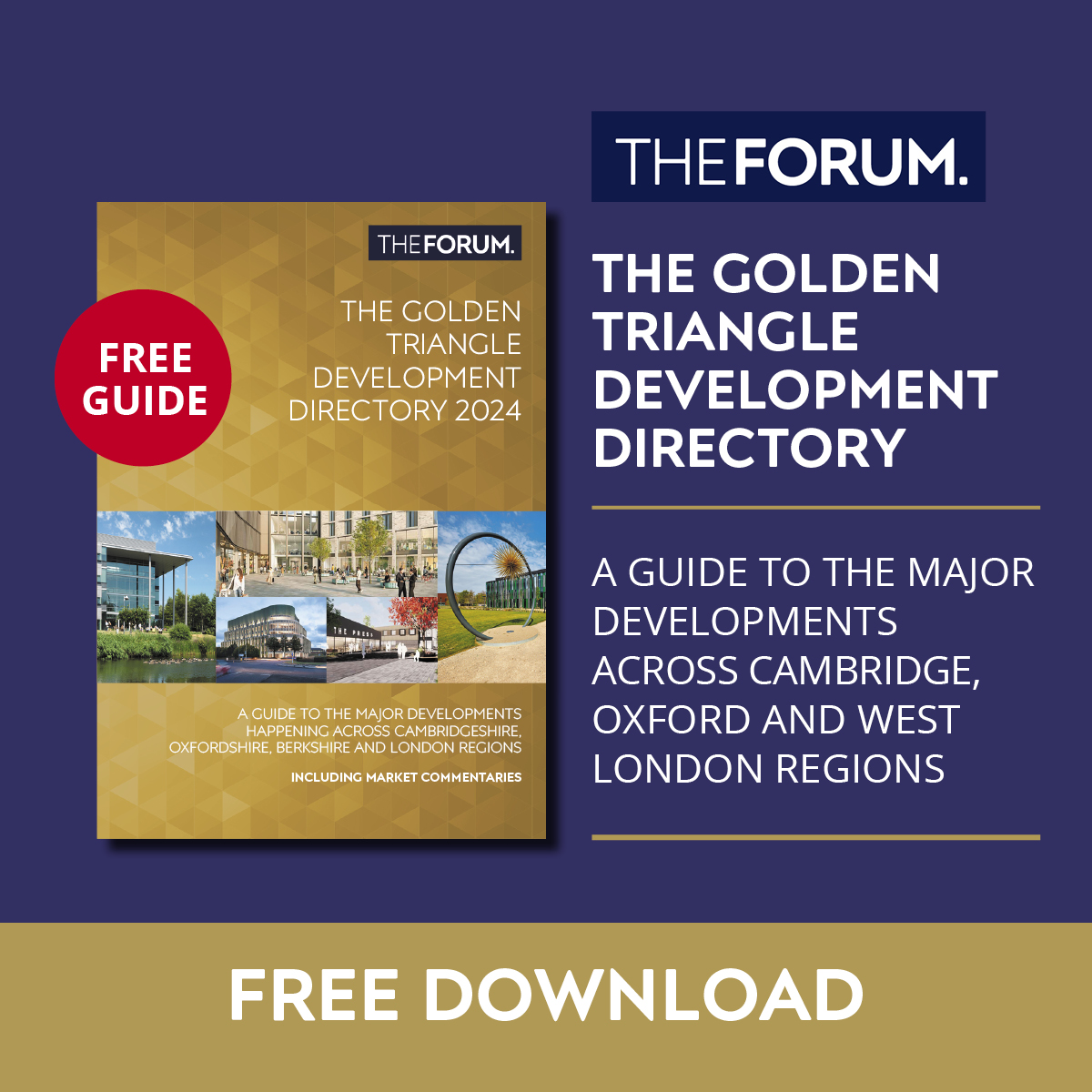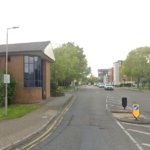East West Rail could be the catalyst needed to deliver the UK’s first science supercluster, a report from the Oxford-Cambridge Supercluster Board states.
At the start of the year, the East West Rail Company commissioned the Oxford-Cambridge Supercluster to produce a report on the potential for the East West Rail (EWR) to become a Catalyst for economic growth across the Oxford-Cambridge Arc.
The paper highlights the opportunity presented by the delivery of East West Rail to unleash the full economic potential of the Arc.
Bidwells estimates that, if the growth potential is provided for sufficiently, the Arc’s economy has the capacity to deliver expand from £125bn to £235bn by 2030.
However, a series of constraints on the Oxford-Cambridge corridor currently exist which range from the tension of local planning functions challenged with the responsibility of national economic assets, transport, power shortfalls and wider policy gaps which have led to the curbing of not only the direct economic contribution of the clusters, but also the productivity and business investment opportunities for the wider region and more importantly, the UK as a whole.
The introduction of the East West Rail can therefore assist in helping the Arc reach its full potential due to a number of reasons:
Enhancing regional economic spillover
The connection between the strong university base in the Arc and the ecosystem of innovative firms in the area allows for a symbiotic relationship of frequent knowledge exchange and innovative collaborations.
Knowledge spill overs from these collaborations into connected locations can provide the catalyst for knowledge industry business formation within and beyond the cluster.
However, the reach of economic spillover is focused on places well-connected by road and rail and are therefore currently highly uneven across the region.
The EWR would allow an expansion to the economic spillover to a wider regional catchment with benefits for the Arc and the UK economy as a whole.
Leverage the interdependencies within regions
The interdependencies of key cities (Oxford, Cambridge and Milton Keynes) can have a further positive effect on productivity growth and income.
However, this impact is only potent for those places that are well connected by road and transit.
Enhancing the connectivity between interdependent cities will enhance their economic firepower and connect other towns across the arc creating new linkages and interdependencies with positive economic results.
Maintain the appeal of place with growth
Place matters for clusters as they seek to attract and retain top global talent.
The economic success of the supercluster therefore depends on retaining and supporting the appeal and resilience of the Arc’s component cities, in terms of amenity, liveability, connectivity, sustainability and affordability.
This means providing a city that still works as it expands, requiring a deliberate plan for growth, including essential infrastructure (such as EWR) to extend city hinterlands, as well as inter- connectivity within clusters.
The Oxford Cambridge Supercluster Board believes that the EWR can be a catalyst for turbocharged economic growth across the Oxford-Cambridge Arc. The full report can be read here.
Construction of the railway between Bicester and Bletchley is already well underway; tracklaying passed the halfway mark earlier this year before passenger services between Oxford and Milton Keynes begin in 2025. We covered the latest proposals for the East West Rail here.
The report states that the EWR provides the backbone for the Oxford-Cambridge Supercluster if supported within the policy enablers, detailed later, alongside focused activity around each of its stations the Oxford-Cambridge Supercluster Board believes EWR can become a catalyst for turbocharged economic growth.
With EWR and a policy landscape that enables growth the private sector, universities and LEPs that form the Oxford-Cambridge Supercluster Board are committed to collaborating with EWR, Government and the Oxford-Cambridge Pan-Regional Partnership to create a UK ‘Silicon Valley’ and bring the science superpower ambition to fruition.
A series of constraints on the Oxford-Cambridge corridor range from the tension of local planning functions challenged with the responsibility of national economic assets, transport, power shortfalls and wider policy gaps have led to the curbing of not only the direct economic contribution of the clusters, but also the productivity and business investment opportunities for the wider region and more importantly the UK as a whole.
The report highlights the opportunity presented by the delivery of EWR to unleash the Oxford-Cambridge economic potential.
It sets out the direct contribution of the Ox-Cam Arc, and how the region can turbocharge economic growth and propel global Britain.
Furthermore, it establishes the opportunity for the EWR to enable the Oxford-Cambridge Supercluster, to drive the economic potential of other regions and cities across the UK.
It is estimated that as reported in the Financial Times in 2022, that its direct contribution could deliver an additional £50bn by 2030 if its growth potential were unencumbered.
The Arc region currently accounts for 7.1 per cent of England’s economic output (GVA) and it is home to some of the country’s fastest growing and most innovative places, including Cambridge, Milton Keynes and Oxford, which are placed in the top ten cities producing the highest number of new economy firms per head of population.
Bidwells estimates that, providing sufficiently for the growth potential, in particular science and tech business space infrastructure (such as EWR) and investment across the region, the Arc’s economy has the capacity to deliver £235bn by 2030 (currently at £125bn).
The Arc’s full potential may be achieved by:
- Adding scale – With critical mass, clusters can strengthen allowing greater specialisation and depth which can attract domestic and international investment.
- Enhancing regional economic spillover – The connection between the strong university base in the arc and the ecosystem of innovative firms in the area allows for a symbiotic relation of frequent knowledge exchange and innovative collaborations. Evidence for strong knowledge spillovers into connected locations which can provide the catalyst for knowledge industry business formation within and beyond the cluster. However, the reach of economic spillover is focused on places well-connected by road and rail, and are therefore currently highly uneven across the region. The EWR would expand the economic spillover to a wider regional catchment with benefits for the Arc and the UK economy as a whole.
- Leverage the interdependencies within regions – The interdependencies of key cities (i.e., Oxford, Cambridge, and Milton Keynes) can have a further positive effect on productivity growth and income. However, this impact is only potent for those places that are well connected by road and transit. Enhancing the connectivity between interdependent cities will enhance their economic firepower. Perhaps, more importantly, connecting other towns across the arc will create new linkages and interdependencies with positive economic results.
- Enabling wider employment growth – With additional critical mass within clusters and through spillover into connected towns, there is the potential to drive wider employment growth to support the growing economies of these ‘spillover’ towns. This contributes to employment growth across the region. Resolution Foundation research finds every six knowledge industry roles supports ten additional workers.
- Maintain the appeal of place with growth – Place matters for clusters as they seek to attract and retain top global talent. The economic success of the Supercluster therefore depends on retaining and supporting the appeal and resilience of the Arc’s component cities, in terms of amenity, liveability, connectivity, sustainability and affordability. This means providing a city that still works as it expands, requiring a deliberate plan for growth, including essential infrastructure (such as EWR) to extend city hinterlands, as well as intra connectivity within clusters.
© Eastern Echo (powered by ukpropertyforums.com).
Sign up to receive our weekly free journal, The Forum here.

















Someone should lobby government to include a stop on the HS2 railway where it will cross the EWR line. This would link the arc better with both London and the Midlands/North.